Competition-Style BBQ Ribs
What’s the perfect summer project for your new Smoke® with the needle probe thrown in? BBQ spare ribs, of course. The Smoke receiver allows you to enjoy your summer afternoon while keeping an eye on your cook, and the needle probe makes it easy to get a reading on the internal temperature of the meat right between the rib bones, even after you wrap. Get all the tips and temperatures you need for best-ever competition-style ribs right here.
What Judges Look for on Competition-Style BBQ Pork Ribs
What sets competition-style ribs apart from something you might cook up at a backyard barbecue, and what are the judges looking for? These are the three factors expert pitmasters point out as the most important for barbecue competition judges.
1.Texture
One major difference is in the texture. Most backyard barbecue pork ribs are cooked until they fall off the bone. Some think that the meat must be falling apart in order for it to be tender. This is not true.
Competition-style ribs are still slightly adhered to the bone and have a slightly chewy texture, yet they are still tender. The meat should pull off the bone with little effort, and leave a bare bone behind. This is often called “perfect bite” in competition circles. The goal is for each bite to leave the bone clean, and have the bite marks in tact in the meat on either side.
Below the sauce, the surface of the meat should have a crusty bark, a little crunchy and a little chewy. It should be tender yet still retain resistance and resilience when you bite into it, like a steak. It should pull off the bone cleanly and with little effort, leaving behind bare bone, but not fall off the bone. —Meathead, AmazingRibs.com
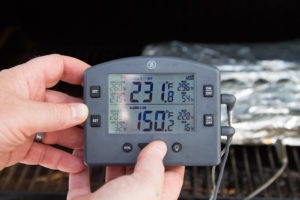
Moisture
Preserving moisture is another factor that contributes to the overall texture of competition ribs. They should be pleasantly moist, never a bit dry. The actual water in the muscle fibers isn’t the only variable that contributes to moist ribs. Ample low and slow cooking time is necessary for connective tissues and fat to render. Liquid fat gives a rich, moist mouth feel and makes the meat silky smooth.
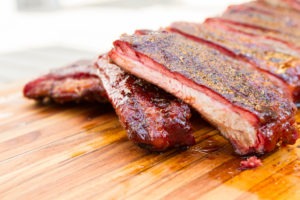
2. Flavor
Of course, your ribs need to have smoke flavor. Keeping the ribs moist during the first part of the cook is critical for proper smoke penetration. A moist, tacky surface will attract and absorb more smoke than a dry surface. Using a water pan and spritzing the ribs periodically during the cook will provide the humidity needed for a rich smoky flavor.
…when it comes to BBQ competitions the goal is to win over the palates of 6 judges. A balance of sweet savory and spice needs to be achieved. —Danielle Bennet, aka: Diva Q
The palates of the judges can vary by region. Mary Cressler of Vindulge (Ember and Vine) has this to say about their experience when they started competing in the Pacific Northwest.
When we did our first competition we were stubborn, and submitted our ribs our way, and, well, we were marked down because our ribs “weren’t sweet enough.” You are cooking for the judges, not yourself.
A little kick is ok, but hold off on the ultra-spicy ingredients for competition-style ribs. Wrap ingredients that include brown sugar and honey work very well to provide the level of sweetness appropriate for BBQ ribs, and help to finish the ribs with a glazed appearance.
3. Presentation
Each rib should be able to slice cleanly for a perfectly uniform presentation. Each rib should look exactly the same, even the bones. Precisely straight-line cuts and uniform thickness are critical. Nailing the texture of the meat is important in being able to cut the ribs cleanly for the best presentation. Tracking your cooker and meat temperatures with the right thermometers will enable you to control the outcome of your cook. No more wondering about the texture of the meat, or accidentally scorching the glaze.
…symmetry and identical appearance are key. All pork ribs should be a carbon copy of one another (rather than including the smaller ribs which taper off). —5 Expert Tips For Your Barbecue Competition Box, Jess Pryles
How to Cook Competition-Style BBQ Ribs
➤ Recipe from Diva Q
- 2 racks St. Louis style pork ribs
- Yellow mustard, for slathering
- Apple juice, for spritzing
Memphis Rib Rub (from pg. 24 of Diva Q’s BBQ)
4 tsp. sweet smoked paprika
- 2 tsp. kosher salt
- 2 tsp onion powder
- 2 tsp finely ground black pepper
- 2 tsp granulated brown sugar
- 1 tsp chili powder
- 1 tsp dried thyme leaves
- 1 tsp dried oregano leaves
- 1 tsp mild mustard powder
- 1/4 tsp allspice
Wrap Ingredients
- Brown sugar
- Squeezable margarine
- Honey
- Hot sauce
Other Equipment
- Smoke™ and Pro-Series® Waterproof Needle Probe
- Thermapen® Mk4
- TimeStick®
- Heavy-duty aluminum foil
- Wood chunks (fruit wood like apple and cherry work well)
Instructions
- Rinse the racks of ribs under cool running water.
- Pat dry with paper towels.
- Remove the membrane from the bony side of the ribs. This membrane is primarily composed of elastin, not collagen. The elastin will not dissolve while cooking.
To remove the membrane, insert the tip of your finger under the membrane in the center of the rack and work a section loose. Grasp the loosened membrane with a piece of paper towel and peel it off. —Diva Q’s Barbecue, Danielle Bennett
- In competition, the ribs need to be as uniform as possible and it starts with proper trimming. Trim excess fat from the ribs.
- Trim the meat so each rack is perfectly rectangular. The ends of the racks should have meat, not bone.
- Make the rub. Put all of the dry rub ingredients into a small bowl and mix well to combine.
- Slather each rack with yellow mustard, creating a surface for the rub to adhere to (sometimes called a “binder”).
- Apply the dry rub to all sides of each rack of ribs.
- Preheat your smoker to maintain a temperature of 225°F (107°C).
- Clean your smoker’s grate.
- Attach your Pro-Series air probe to the grate with a grate clip.
- Set your Smoke’s high and low alarms.
- High alarm: 230°F (110°C)
- Low alarm: 220°F (104°C)
- Carefully place your Pro-Series needle probe in the middle of the meat between two bones in one rack of ribs. (You should always exercise care to avoid bone when placing a probe in meat. The bone can act as a either an insulator or conductor of heat and affect a temperature reading. You want to be measuring the meat temperature, not the bone temperature. Fortunately, the Pro Series needle probe is thin enough to easily fit into the meat between the bones with a rack of ribs.)
- Place the racks in your smoker.
- Set the high alarm of your Smoke’s meat channel.
- High alarm: 165°F (74°C)
- Set a TimeStick for 30 minutes.
- Every 30 minutes spritz the ribs with apple juice.
- When the meat’s high alarm sounds, spot-check the internal temperature in multiple areas with a Thermapen to verify that 165°F (74°C) is the lowest temperature in the ribs.
- If a lower temperature is found, reposition the needle probe to read the lowest temperature, and continue cooking until the thermal center reaches 165°F (74°C).
- When 165°F (74°C) is verified, remove the ribs from the smoker for wrapping.
- Lay out two layers of heavy duty aluminum foil large enough to completely wrap a rack of ribs, and begin layering wrap ingredients:
- Two handfuls of brown sugar
- A squiggle of margarine
- A few thin lines of honey
- A little bit of hot sauce
- Place one rack of ribs on top of the wrap ingredients meat-side down, and repeat the same order of layering ingredients to a lesser amount on bone side of the ribs.
- Wrap the foil around the ribs tightly.
- Replace the needle probe by feeling the outside edge for the bones. When you locate two bones, insert the needle probe laterally between them. Move the needle probe around until you find the lowest temperature reading on your Smoke thermometer. Leave your needle probe in that location in the ribs.
- Return the ribs to the smoker meat side down and let them continue cooking until the internal temperature reaches 203°F (95°C).
- Reset the meat’s high alarm on your Smoke to 203°F (95°C).
- Once the meat’s high alarm sounds, use a Thermapen to verify the meat’s internal temperature. Let the ribs continue cooking if a lower temperature is found.
- Once an internal temperature of 203°F (95°C) is verified, remove the ribs from the smoker.
- Unwrap the ribs VERY carefully. The ribs and sauce created from the wrap ingredients will be very hot. Remove the ribs from the foil wrapping.
- Let the ribs rest for about 15 minutes, covered.
- Slice the ribs cleanly between the bones. Serve, and enjoy your masterpiece!
Barbecue competitions are about the skill and experience that it takes to cook world-class barbecue, and no one minds the trophies and prize money. But more than that, it’s about your dedication and belonging to a community of people who love to barbecue as much as you do.
After attending Memphis in May, Johnny Boo (contributing editor for Serious Eats) had this to say about the experience, “…these three days of partying, passion and pork have shown me that Memphis in May is much less about winning than it is about making one’s mark in a tightly knit community of barbecue fanatics.”
Regardless of where you’re at with your barbecue experience, take these thermal tips to up your game. And who knows? You may just find yourself in the competitive barbecue circuit before long.
Products Used:
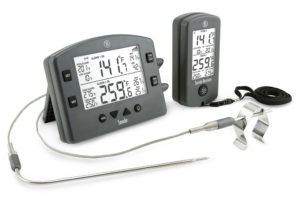
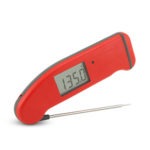
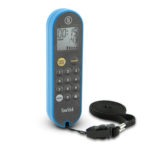
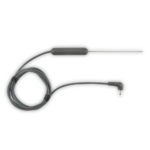
Resources:
Diva Q’s Barbecue, Danielle Bennett
5 Expert Tips For Your Barbecue Competition Box, Jess Pryles
Winning World Competition Ribs, TraegerGrills.com
Competition Style Smoked Pork Ribs—A Flavor Journey, Vindulge.com
Amazing Ribs Defined, AmazingRibs.com
Competition Rib Method, HowToBBQRight.com
Memphis in May: How Do Judges Define Barbecue ‘World Champion’?, Johnny Boo, SeriousEats.com


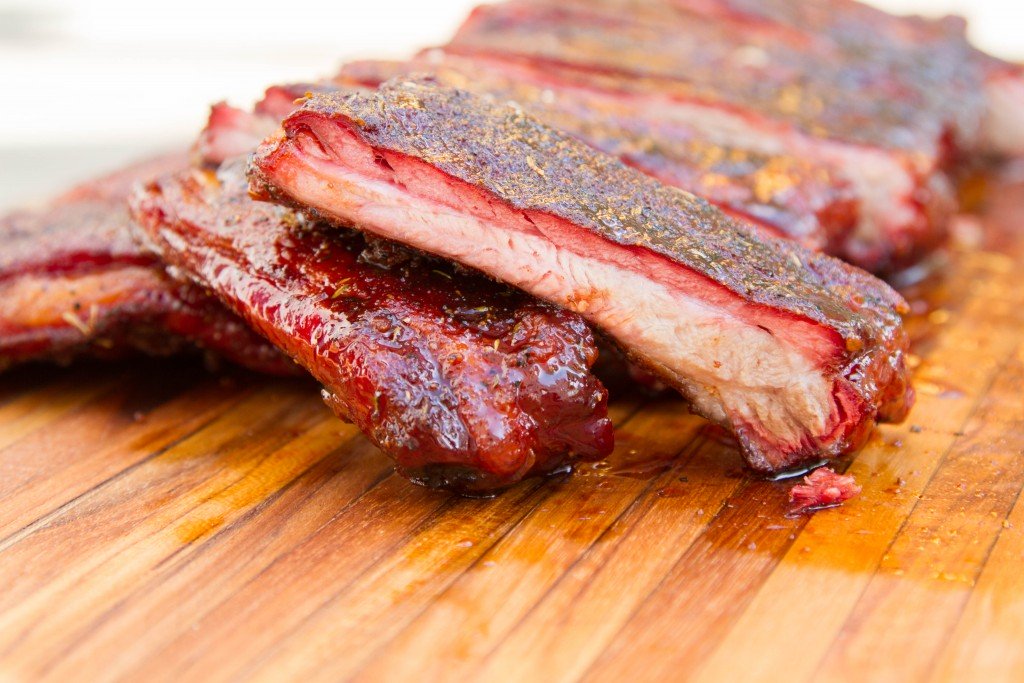

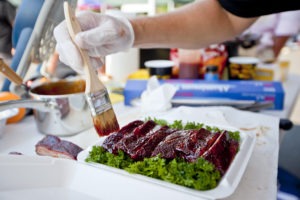
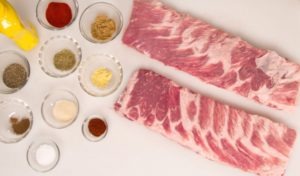 4 tsp. sweet smoked paprika
4 tsp. sweet smoked paprika













I will definitely add this along with other tips. I have tried this in the past and love them ribs.
Thank you for this. Too many people think that “fall-off-the-bone” is the standard that needs to be replicated, more in the North than in the South. In the North they often grew up with spareribs in sauerkraut and think that’s the consistency they want to replicate. Any competition in the South disqualifies “fall-off-the-bone” ribs.